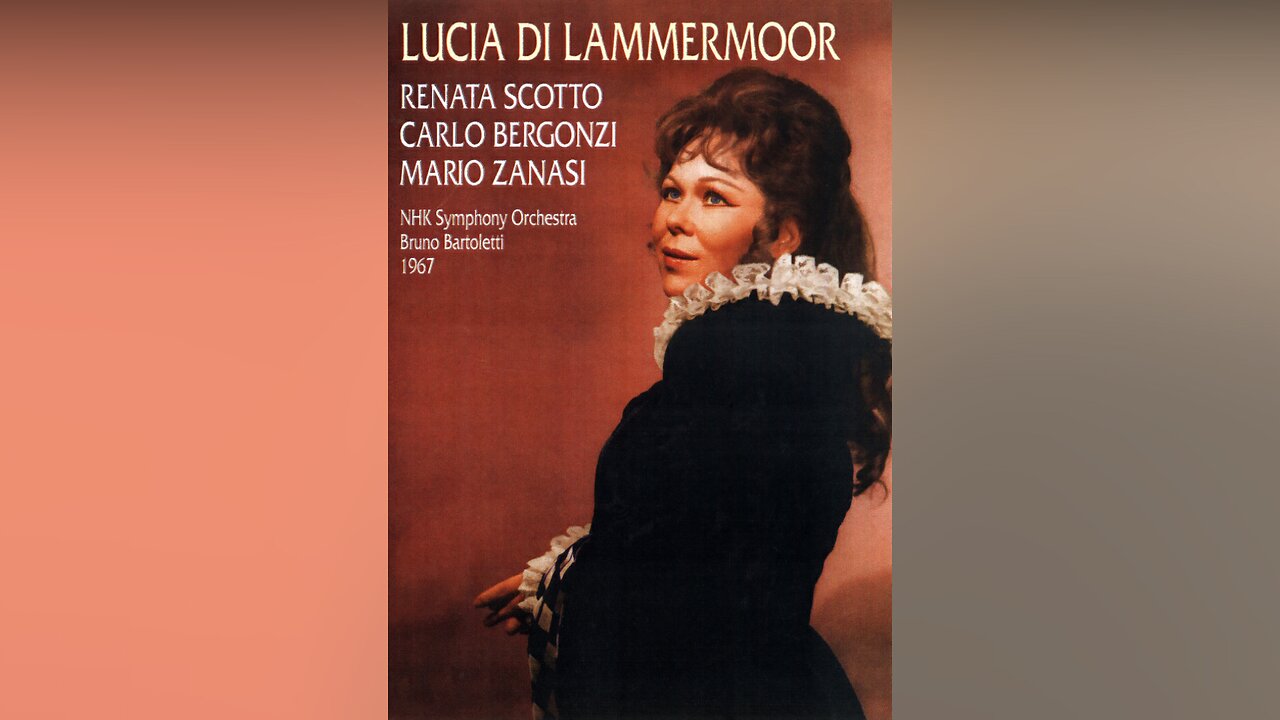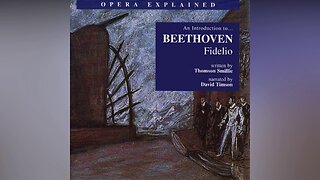Premium Only Content

Donizetti: Lucia di Lammermoor | Scotto, Bergonzi, Zanasi - Bartoletti (La Scala in Tokyo 1967)
Composer: Gaetano Donizetti
Librettist: Salvatore Cammarano, after Sir Walter Scott's 'The Bride of Lammermoor'
Premiere: 26 Septemberr 1835, Naples (Teatro San Carlo di Napoli)
Language: Italian
Translation: Italian and English subtitles (Click on CC to switch on subtitles)
Lucia di Lammermoor Synopsis: https://www.opera-arias.com/donizetti/lucia-di-lammermoor/synopsis/
Lucia di Lammermoor is a dramma tragico (tragic opera) in three acts by Italian composer Gaetano Donizetti. Salvadore Cammarano wrote the Italian-language libretto loosely based upon Sir Walter Scott's 1819 historical novel The Bride of Lammermoor. The story concerns the emotionally fragile Lucy Ashton (Lucia) who is caught in a feud between her own family and that of the Ravenswoods. The setting is the Lammermuir Hills of Scotland (Lammermoor) in the 17th century.
Cast & Crew:
Miss Lucia - Renata Scotto
Sir Edgardo Di Ravenswood - Carlo Bergonzi
Lord Enrico Ashton - Mario Zanasi
Lord Arturo Bucklaw - Angelo Marchiandi
Raimondo Bidebent - Plinio Clabassi
Alisa - Mirella Fiorentini
Normanno - Giuseppe Baratti
The NHK (Nippon Hoso Kyokai) Symphony Orchestra
Conductor - Bruno Bartoletti
Tokyo Philharmonic Chorus
Chorus Master - Yoichiro Fukunaga
Momoko Tani Ballet Troupe
Choreographer - Goro Arima
Sankikai Theatrical Company
Stage Director - Bruno Nofri
Scenery - Enzo Deho
Costume Design - Marcello D'Ellena
Recorded Live, September 1967, Tokyo Bunka Kaikan
La Scala Tour in Japan 1967.
Donizetti wrote Lucia di Lammermoor in 1835, when he was reaching the peak of his reputation as an opera composer. Gioachino Rossini had recently retired and Vincenzo Bellini had died shortly before the premiere of Lucia leaving Donizetti as "the sole reigning genius of Italian opera". Not only were conditions ripe for Donizetti's success as a composer, but there was also a widespread interest in the history and culture of Scotland. The perceived romance of its violent wars and feuds, as well as its folklore and mythology, intrigued 19th century readers and audiences.
After World War II, a number of sopranos were instrumental in giving new life to the opera, including Maria Callas (with performances from 1954 at La Scala and Berlin in 1955 under Herbert von Karajan) and Dame Joan Sutherland (with 1959 and 1960 performances at the Royal Opera House Covent Garden). An aria from the opera, "Il dolce suono", is featured in the film The Fifth Element.
-
 1:19:30
1:19:30
Adaneth - Arts & Literature
2 days agoOpera Explained | Fidelio by Beethoven (Audio)
211 -
 LIVE
LIVE
Caleb Hammer
1 hour agoChildish Couple Won’t Stop Cheating On Each Other | Financial Audit
220 watching -
 23:18
23:18
Crowder Bits
4 hours agoDebunked: John Oliver's Outrageous Lies About Trump 2.0
27.8K23 -
 2:16:08
2:16:08
Matt Kohrs
12 hours agoMarket Open: Key Options Levels & Breaking News || The MK Show
32.9K1 -
 42:49
42:49
BonginoReport
5 hours agoBlasphemy: Hollywood Casts Queer Female Jesus (Ep.143) - 02/19/2025
93.5K160 -
 LIVE
LIVE
Wendy Bell Radio
7 hours agoGETTING IT DONE
9,776 watching -
 1:29:17
1:29:17
Graham Allen
4 hours agoPete Hegseth Is Going After BIDEN for Afghan Withdrawal!! + Trump EXPOSES Insane Spending!!
52.2K54 -
 1:30:58
1:30:58
Game On!
17 hours ago $4.81 earnedNFL EXPERTS PREDICT 2025's FIRST ROUND PICKS!
52.9K -
![TRUMP: Ukraine War With Russia Could Start World War 3 [EP 4444-8AM]](https://1a-1791.com/video/fwe1/e3/s8/1/A/I/6/2/AI62x.0kob-small-TRUMP-Ukraine-War-With-Russ.jpg) 4:08:03
4:08:03
The Pete Santilli Show
1 day agoTRUMP: Ukraine War With Russia Could Start World War 3 [EP 4444-8AM]
40.6K5 -
 1:29:11
1:29:11
Jeff Ahern
3 hours ago $1.91 earnedNever Woke Wednesday with Jeff Ahern (6am Pacific)
30.9K